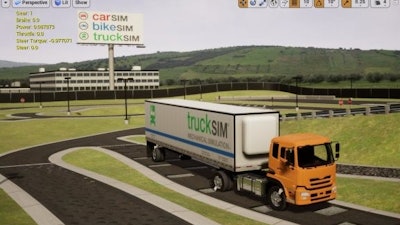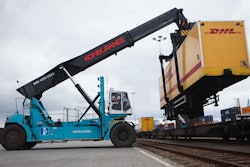
Mechanical Simulation announces the release of the 2019.0 versions of the vehicle simulation tools CarSim, TruckSim, and BikeSim, and the suspension simulation tool SuspensionSim.
The VehicleSim products CarSim, TruckSim, and BikeSim have long featured high-fidelity math models for vehicle dynamics that can reproduce physical test results. The math models run fast enough to support real-time simulation with hardware in the loop and can support massive optimization projects involving hundreds of thousands of simulated conditions.
As with past upgrades, the newest versions of the vehicle models have significant new features. Version 2019.0 includes built-in support for hybrid powertrains, importing OpenDRIVE road networks, support for the Michelin TameTire model, a built-in electronic stability controller (ESC), an engineering quality plug-in for the Unreal Engine, and many improvements in existing built-in controllers and programming options.
With the automotive industry investing heavily in ADAS (advanced driver assistance systems) and AV (autonomous vehicle) technologies, the company's simulation tools have been extended to support these new applications. According to Dr. Michael Sayers, CEO and Chief Technology Officer, “With the increasing use of the advanced controllers for ADAS and autonomous driving, simulation is used in increasingly complicated scenarios. Simulations increased vehicle population, operating under more complex conditions and including more interactions with pedestrians and other vehicles.” In light of this, recent releases have introduced major new capabilities for building scenarios and providing more realistic video visualization in support of on-board cameras and other sensors. The simulation tools include built-in sensors and target objects that can be used to represent traffic vehicles, pedestrians, bicyclists, traffic signs and signals, buildings, and any other type of object that is needed to simulate a scenario of interest. Sayers notes that “two new types of objects were introduced to simplify the creation of scenarios with traffic signs, curved walls along the roadside, and irregular shaped objects.” New options were added for specifying motions of traffic vehicles with acceleration control to provide built-in physics needed to simulate more complex interactions.
According to Sayers, Mechanical Simulation is supporting even more external software and data, especially with tools that provide complicated 3D road networks and intersections, and with tools that provide advanced visualization. Existing capabilities for importing road GPS data from mapping services have been extended. VehicleSim software now handles road network data provided in the OpenDRIVE format. The new VehicleSim Dynamics plug-in allows any CarSim or TruckSim model to run in the Epic Unreal video environment. A new interface called VS Terrain API connects any model from CarSim, TruckSim, or BikeSim with ground data from external software, such as mesh data files based on extensive measurements made with LIDAR systems. Another component, VS Connect, has been updated to connect VehicleSim models to multiple external environments simultaneously, such as a 3D world handled by Unreal and vehicle controllers running in Simulink.


















